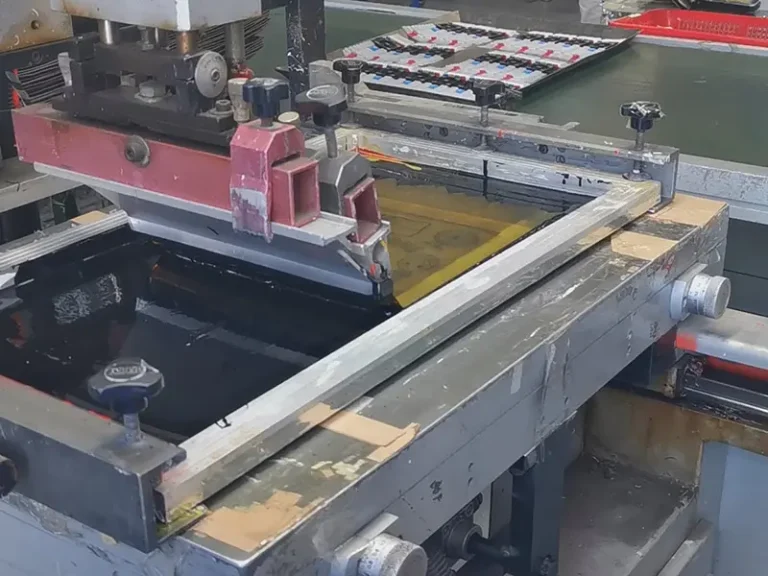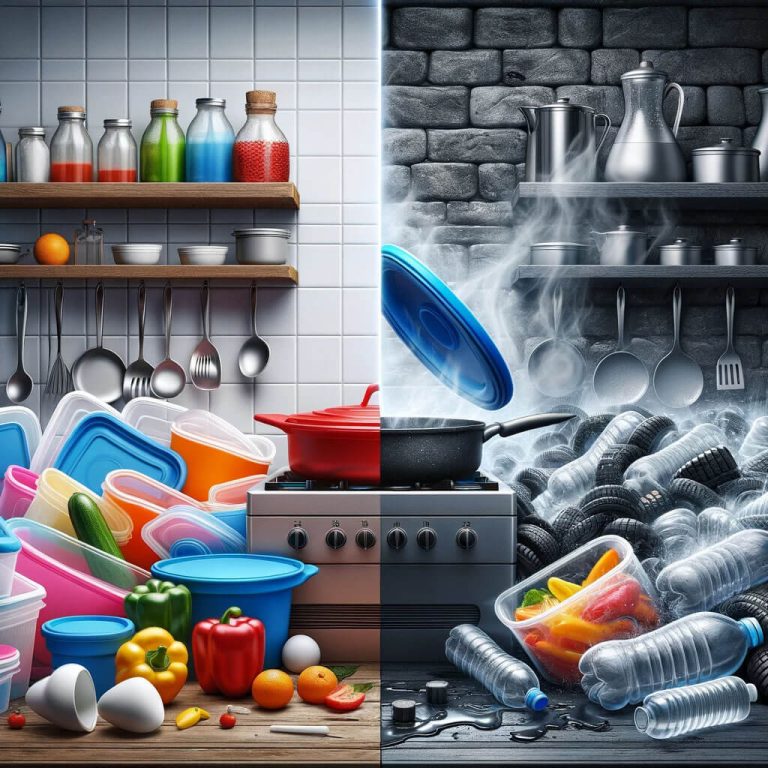Screen printing on silicone is a delicate craft that offers boundless creative opportunities.
From industrial applications to custom-designed products, mastering this technique can be game-changing.
In this comprehensive guide, we’ll unveil the art and science behind screen printing on silicone, empowering you with the knowledge needed to create impeccable prints.
With a seamless blend of technical expertise and artistic finesse, this guide will illuminate the nuances of preparing silicone surfaces, selecting the right inks, and achieving impeccable adhesion and durability. Whether you’re a seasoned professional seeking to expand your skill set or a curious novice eager to delve into the world of silicone printing, this guide is your ultimate companion.
Unraveling the complexities and demystifying the process, we’ll equip you with actionable insights and proven techniques to elevate your printing endeavors. Get ready to explore the convergence of innovation and imagination as we embark on this transformative journey into the realm of screen printing on silicone.
Understanding screen printing on silicone
Screen printing on silicone involves the process of transferring ink onto a silicone surface using a stencil and a mesh screen. This method allows for precise and detailed designs to be printed on a variety of silicone-based products. Understanding the properties of silicone and how they interact with different types of inks is crucial in achieving successful and long-lasting prints. The flexibility and durability of silicone make it an ideal substrate for a wide range of applications, from medical devices to consumer products.
Advantages of Screen Printing on Silicone
Screen printing on silicone offers several advantages over other printing methods. The ability to achieve vibrant and opaque colors on silicone surfaces, along with excellent adhesion and resistance to wear, makes it a preferred choice for many applications. Additionally, the versatility of silicone allows for printing on curved or irregularly shaped objects, opening up new design possibilities for creative professionals. The durability and flexibility of silicone prints make them suitable for products that require frequent handling or exposure to harsh environments.
Screen printing on silicone involves transferring ink onto silicone surfaces through a mesh screen, with each color applied separately. The flexibility and non-porous nature of silicone present unique challenges and opportunities for achieving high-quality prints. Understanding the properties of silicone and the intricacies of the printing process is essential for mastering this art form.
Silicone’s remarkable resistance to extreme temperatures, chemicals, and UV radiation makes it an ideal substrate for various applications. However, its low surface energy and non-adhesive properties require specialized techniques and materials for successful printing. By comprehending the interaction between inks and silicone, as well as the role of surface preparation, printers can overcome these challenges and unlock the full potential of silicone printing.
Common Applications of Screen Printing on Silicone
Silicone screen printing finds extensive use in industries such as medical devices, automotive components, electronic products, and promotional items. Medical devices often utilize silicone printing for marking and labeling purposes, where durability and biocompatibility are essential. In the automotive industry, screen printing on silicone is employed for decorating dashboard components, control panels, and other interior parts. Consumer products such as phone cases, wearables, and kitchenware also benefit from the aesthetic appeal and functional characteristics of silicone screen printing.




Essential Tools and Materials for Screen Printing on Silicone
To embark on a successful silicone screen printing project, you will need specialized tools and materials. These include silicone-specific inks that adhere well to the substrate, a mesh screen with the appropriate tension for detailed printing, a squeegee for ink application, and a curing method suited to silicone. Additionally, proper surface preparation and cleaning materials are crucial to ensure optimal adhesion and print quality. Understanding the compatibility of different inks and curing methods with specific silicone formulations is vital to achieving the desired results.
Step-by-Step Guide to Screen Printing on Silicone
Surface Preparation:
Thoroughly clean the silicone surface to remove any contaminants or residues that may hinder ink adhesion. Use a silicone-specific cleaning solution and ensure the surface is completely dry before proceeding.
Stencil Preparation
Create or obtain a high-quality stencil that accurately represents the desired design. Ensure that the stencil material is compatible with silicone inks and can withstand multiple printing cycles.

Ink Selection
Choose silicone-specific inks that are formulated to adhere well to silicone surfaces and offer the desired color intensity and durability. Consider factors such as opacity, flexibility, and resistance to environmental factors.

Screen Printing Process
Secure the silicone substrate in place and position the stencil over the printing area. Apply the chosen ink to the screen and use a squeegee to evenly distribute the ink over the stencil, transferring the design onto the silicone surface.
Curing
Follow the recommended curing process for the selected ink, ensuring proper adhesion and durability. Curing methods may include heat curing, UV curing, or air-drying, depending on the ink formulation and substrate requirements.
Post-Processing
Once the ink is cured, conduct any necessary post-processing steps such as additional curing, surface treatments, or quality inspections to ensure the print meets the desired standards.
Tips for Achieving High-Quality Results

- Optimize Ink Thickness: Ensure an even and consistent ink layer to achieve vibrant colors and precise details in the print. Proper squeegee pressure and angle are crucial in controlling ink deposition.
- Maintain Proper Curing Conditions: Follow the recommended curing parameters, including temperature, time, and environmental conditions, to achieve maximum adhesion and durability.
- Test and Iterate: Conduct thorough testing on sample silicone substrates to fine-tune the printing parameters, including ink viscosity, mesh tension, and curing methods, before scaling up to production.
- Surface Compatibility: Consider the specific characteristics of the silicone substrate, such as texture, hardness, and surface treatments, when selecting inks and adjusting printing parameters for optimal adhesion.
- Quality Control: Implement stringent quality control measures to inspect printed samples for color accuracy, adhesion strength, and resistance to environmental stressors, ensuring consistent high-quality results.
Curing and Post-Processing Techniques for Silicone Screen Printing
The curing process for silicone screen printing plays a critical role in achieving durable and long-lasting prints. Heat curing, which involves exposing the printed silicone to elevated temperatures for a specified duration, is a common method that ensures proper ink adhesion and resistance to abrasion. UV curing, on the other hand, utilizes ultraviolet light to polymerize and cure the ink, offering rapid curing times and reduced energy consumption. Additionally, post-processing techniques such as surface treatments and protective coatings can further enhance the durability and aesthetics of silicone prints, making them suitable for a wide range of applications.
Troubleshooting Common Issues in Silicone Screen Printing
Despite meticulous preparation and execution, silicone screen printing may encounter challenges such as ink adhesion issues, insufficient opacity, or uneven curing. Understanding the root causes of these issues and implementing targeted solutions is essential in achieving consistent and high-quality prints. Factors such as improper surface preparation, ink formulation, curing parameters, or equipment calibration can contribute to printing defects, highlighting the importance of thorough troubleshooting and process optimization.
Advanced Techniques and Innovative Trends in Silicone Screen Printing
As the demand for customized and durable printed products continues to grow, advanced techniques and innovative trends in silicone screen printing have emerged. These include the integration of conductive inks for printed electronics, the development of translucent and tactile effects for enhanced product aesthetics, and the exploration of multi-color and gradient printing capabilities on silicone surfaces. Furthermore, advancements in ink formulations and curing technologies have expanded the application possibilities for silicone screen printing, paving the way for new opportunities in diverse industries.

Conclusion and Future Prospects for Silicone Screen Printing
In conclusion, mastering the art of screen printing on silicone offers a gateway to unparalleled creativity and functional excellence.
By understanding the intricacies of silicone surfaces, selecting the right inks, and implementing precise printing and curing techniques, professionals and enthusiasts alike can unlock the full potential of this versatile printing method.
As technology and materials continue to evolve, the future prospects for silicone screen printing are poised for further innovation and expansion, driving the convergence of artistry, functionality, and durability in printed silicone products.
In this comprehensive guide, we’ve delved into the essential aspects of screen printing on silicone, providing a roadmap for success and inspiring exploration of new possibilities.
Whether you’re venturing into silicone screen printing for the first time or seeking to elevate your existing skills, the fusion of creativity and technical expertise in this craft holds boundless opportunities for innovation and expression.
Embrace the art and science of silicone screen printing, and let your creations leave an indelible impression in the world of printed wonders.






